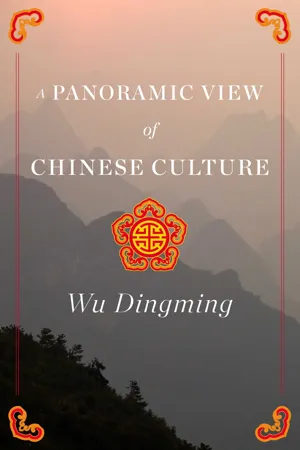
This is a test
- 320 pages
- English
- ePUB (mobile friendly)
- Available on iOS & Android
eBook - ePub
A Panoramic View of Chinese Culture
Book details
Book preview
Table of contents
Citations
About This Book
A Panoramic View of Chinese Culture is an accessible introduction to the beautiful, vibrant world of Chinese customs, history, and civilization. Written for English speakers, with simplified Chinese translations of key words, the text invites students of China and the Chinese language to engage with the text in new and interesting ways. Covering everything from history, philosophy, and religion, to sports, cuisine, and medicine, A Panoramic View of Chinese Culture covers a vast array of topics with elegance and ease.
Frequently asked questions
At the moment all of our mobile-responsive ePub books are available to download via the app. Most of our PDFs are also available to download and we're working on making the final remaining ones downloadable now. Learn more here.
Both plans give you full access to the library and all of Perlego’s features. The only differences are the price and subscription period: With the annual plan you’ll save around 30% compared to 12 months on the monthly plan.
We are an online textbook subscription service, where you can get access to an entire online library for less than the price of a single book per month. With over 1 million books across 1000+ topics, we’ve got you covered! Learn more here.
Look out for the read-aloud symbol on your next book to see if you can listen to it. The read-aloud tool reads text aloud for you, highlighting the text as it is being read. You can pause it, speed it up and slow it down. Learn more here.
Yes, you can access A Panoramic View of Chinese Culture by Wu Dingming in PDF and/or ePUB format, as well as other popular books in Social Sciences & Cultural & Social Anthropology. We have over one million books available in our catalogue for you to explore.
Information
Unit 1 The Origin of Chinese Culture
1.1 Chinese Culture—Past and Present
Along with ancient Egypt, Babylon, and India, China is one of the four great ancient civilizations of the world. Home to one of the world's oldest and most complex civilizations, China boasts a history rich in over 5,000 years of artistic, philosophical, political, and scientific advancement. Though regional differences provide a sense of diversity, commonalities in language and religion connect a culture distinguished by such significant contributions as Confucianism and Taoism, the former being the official philosophy taught and practiced throughout most of Imperial China's history and which has had a strong influence upon other countries in East Asia as well.
In approximately the 21st century BC, a primitive agricultural society first appeared in the areas around China's Yellow and Yangtze rivers, where animal husbandry joined hunting and fishing as a means of human sustenance. Approximately two millennia later, the Xia Dynasty (21st—17th century BC) emerged as China's first dynastic government. This was followed by the Shang Dynasty (17th—11th century BC) and the Western Zhou Dynasty (11th century—771 BC), which further refined the national system of governance.

China's Spring and Autumn and Warring States periods saw a great upsurge in science and technology, as well as in ideology and culture. Much as ancient Greece gave rise to Socrates, Plato, and Aristotle, China produced, during this time, a number of great scholars who possessed abundant ideas and extensive knowledge, including Kongzi (Confucius), Laozi, Mozi, Xunzi, and Mengzi (Mencius). The atmosphere of free debate that had existed among the different schools of philosophy founded by these Chinese thinkers was aptly characterized by the saying, “Let a hundred flowers blossom and a hundred schools of thought contend. ”

Like their contemporaries in ancient Greece, the Chinese philosophers established schools and accepted pupils, discoursed and debated eloquently, pondered military and governmental affairs, and served as strategists and advisors to their country's leaders. They left future generations a valuable legacy in philosophy, politics, education, and the military, and had a profound influence on the culture of China and the entire world. One of these illustrious figures, for example, is the military strategist Sun Wu (Sunzi). His renowned work, the Art of War is still used extensively in the areas of military and economic affairs.
Traditional Chinese culture is recorded not only in history books and documents, but also in archeological records, such as ancient city walls, palaces, temples, pagodas, and grottos; artifacts, such as bronze; objects, weapons, bronze mirrors, coins, clocks, jade and pottery objects, and curios; and folk culture, including song and dance, embroidery, cuisine, clothing, tea ceremonies, drinking games, lanterns, riddles, martial arts, chess, and kites. Chinese civilization has its source far in the distant past, and its depth and breadth is being revealed evermore. With a continuous history of 5,000 years, it has undergone frequent transformations to produce a rich and vital cultural heritage.
In the modern day, with the rise of Western economic and military power beginning in the mid-19th century, Western systems of social and political organization have gained adherents in China. Some of these would-be reformers have chosen to reject China's cultural legacy altogether, while others have sought ways of combining the strengths of both Chinese and Western cultures. Indeed, within today's globalized environment, modern cultures interact and cooperate increasingly more with each other. China's culture of the future will most likely reflect this cross-cultural dimension. Thus, obtaining a solid understanding of China's culture of the past is necessary in order to successfully embrace all that the culture has to offer to the world.
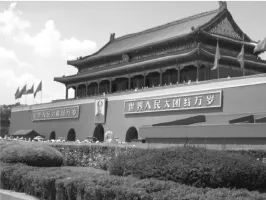
1. 2 The Appellation of China
Why Is the Country Called China?
China is the appellation of our country given by foreigners. The porcelain china is the transliteration of the place name Changnan, which was the old name for the porcelain town of today's Jingdezhen. In the Eastern Han Dynasty (25—220), people built their cave-houses and cut logs to make pottery. And in the Tang Dynasty(618—907), people combined the advantages of celadon from the southern Yue kiln; and white porcelains from the northern Xing kiln, and with the high-quality earth of the Gaoling Mountain in Changnan Town they produced a kind of white and green porcelain. This porcelain was smooth and bright, and hence earned another name of artificial jade. It became famous both home and abroad and was exported to Europe in large quantities since people there did not know how to make porcelain before the 18th century.
In Europe, people regarded Changnan porcelain as something precious and delicate and would take pride in possessing one. As time passed, people in Europe forgot the meaning of Changnan and switched the original meaning of porcelain of the word “china” to the place of its origin—China. Therefore, Changnan in people's eyes represented porcelain and China. In the Jingde reign of the Song Dynasty (960—1279), Emperor Zhenzong loved Changnan porcelain so much that he ordered to build official cave-houses to make porcelain of all kinds. And porcelains paid as tributes to the emperor were required to print with “made in the Jingde reign” at the bottom. From then on, Changnan Town became Jingde Town and it remained as such until today.
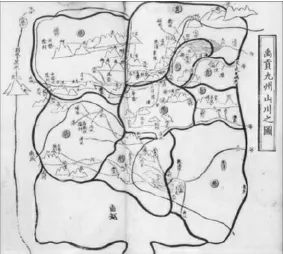
The Alternative Names of China
Chixian, Shenzhou
In the Chinese historical book Shiji: Biographies of Mencius and Xunqing, there was a man named Zouyan in the Qi State in the Warring States Period (475—221BC) who said that China was Chixian Shenzhou (the sacred earth and divine land). From then on, people sometimes called China Chixian Shenzhou. But people usually used this name separately by calling China Chixian or Shenzhou.
Jiuzhou
After Dayu's fighting against the flood in the Xia Dynasty (21st—17th century BC), China was divided into nine administrative divisions: Ji, Yan, Qing, Jing, Yang, Liang, Yong, Xu and Yu.
Hua
In ancient times Hua meant flowers denoting something beautiful and glorious. There are three interpretations of Hua: Firstly, ancient people in the Central Plains regarded themselves as civilized people who dressed neatly and elegantly, so they named themselves as Hua. Secondly, Hua denotes the red color. People in the Zhou Dynasty (1046—256BC)liked the red color so much that they took it as the symbol of blissfulness; and so called themselves Hua. Thirdly, Hua is of a long history as the shortened form of the ancient name Huaxia of China.
Huaxia
In ancient times Xia meant big and huge. After the Xia Dynasty was established by Dayu (Yu the Great), China was frequently referred to as Xia. The Huaxia nationality living in the Central Plains and other nationalities in the north and south all gave in to the Shang Dynasty (17th—11th century BC). And later on China was referred to as Huaxia since it was the largest nationality at that time.
Zhonghua
Before the Qing Dynasty(1616—1911), the Huaxia nationality named their motherland Zhongguo, and after that, it developed into a nation of various nationalities, and was then called Zhonghua Nation (known as Chinese Nation). Zhong denotes China, and Hua is the Huaxia nationality for short. Zhonghua Nation is the collective name for all the nationalities in China.
Hainei
The ancient people thought that China was surrounded by seas, so they named China Hainei (within the seas) and foreign countries Haiwai(overseas).
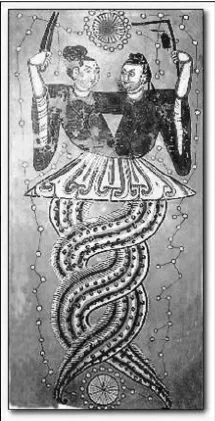
1.3 Chinese Mythology
Chinese Mythology is a collection of cultural history, folktales, and religions that have been passed down in oral or written form. There are several aspects to Chinese mythology, including creation myths and legends and myths concerning the founding of Chinese culture and the Chinese state. Like many mythologies, some people believe it to be a factual recording of history.
Historians have conjectured that the Chinese mythology began in 12th century BC (close to the time of the Trojan War). The myths and legends were passed down in oral form for over a thousand years, before being written down in early books such as Shui Jing Zhu and Shan Hai Jing. Other myths continued to be passed down through oral traditions such as theaters and songs, before being recorded in the form of novels such as Fengshen Yanyi.
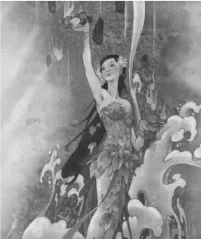
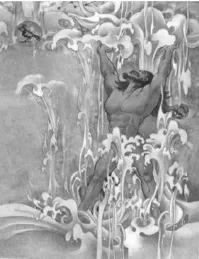
A unique characteristic of Chinese culture is the relatively late appearance of creation myths in Chinese literature. Those that do exist appear well after the foundation of Confucianism, Taoism, and Folk Religions. The stories exist in several versions, often conflicting, with the creation of the first human being variously ascribed to Shangdi, Heaven, Nüwa, Pangu, Yu Huang. The following presents common versions of the creation story in roughly chronological order.
Nüwa and Fuxi
Nüwa and Fuxi are often represented as half-snake, halfhuman creatures. Nüwa, appearing in literature no earlier than about 350 BC, is said to have recreated, or created humanity. Her companion was Fuxi, the brother and husband of Nüwa. These two beings are sometimes worshipped as the ultimate ancestor of all humankind. Nüwa was also responsible for repairing the sky after Gong Gong damaged the pillar supporting the heavens.
Pangu
Pangu, appearing in literature in about 200 AD, was the first sentient being and creator. In the beginning there was nothing but a formless chaos. However this chaos grew into a cosmic egg for about 18,000 years. Within it, the perfectly opposed principles of Yin and Yang became balanced, and Pangu emerged (or woke up) from the egg and set about the task of creating the world. He separated Yin and Yang with a swing of his great axe. The heavy Yin sank to become the Earth, while the light Yang rose to become the Heavens. Pangu stood between them, and pushed up the sky. At the end of the 18,000 years, Pangu laid to rest. His breath became the wind; his voice the thunder; left eye the sun and right eye the moon; his body became the mountains and extremes of the world; his blood formed rivers; his muscles the fertile lands; his facial hair the stars and milky way; his fur the bushes and forests; his bones the valuable minerals; his bone marrow sacred diamonds; his sweat fell as rain; and the little creatures on his body (in some versions, the fleas), carried by the wind, became human beings all over the world.
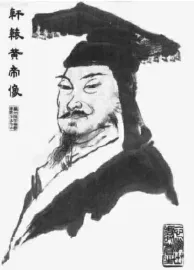
Yu the Great
Yu is often regarded with legendary status as Yu the Great, was the first ruler and founder of the Xia Dynasty. Occasionally identified as one of the Three Sovereigns and the Five Emperors, he is best remembered for teaching the people flood control techniques to tame China's rivers and lakes.
Yu's father, Gun, was assigned by Yao to regulate the floods but was so unsuccessful in his attempt that he was executed by the later ruler Shun. Recruited as a successor to his father, Yu began dredging new river channels as outlets, spending a back-breaking thirteen years at this task, with the help of some 20,000 workers.
Yu is remembered as an example of perseverance and determination. He is revered as the perf...
Table of contents
- Unit 1 The Origin of Chinese Culture
- Unit 2 Chinese Language
- Unit 3 Chinese Cuisine
- Unit 4 Ancient Capitals and Heritages
- Unit 5 Crafts and Skills
- Unit 6 Festivals and Customs
- Unit 7 Traditional Sports and Athletics
- Unit 8 Ancient Science and Technology
- Unit 9 Operas and Music
- Unit 10 Classical Literature
- Unit 11 Education and Aesthetics
- Unit 12 History in Brief
- Unit 13 Thoughts and Philosophy
- Unit 14 Religions and Beliefs
- Unit 15 Medicine and Herbology
- Unit 16 Exchanges with Foreign Countries
- Appendices